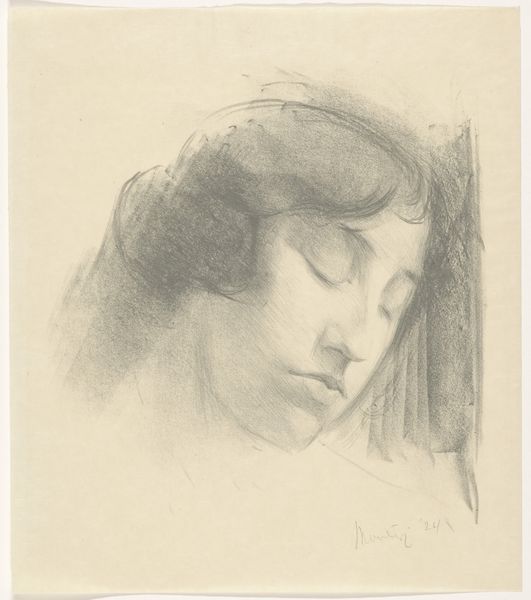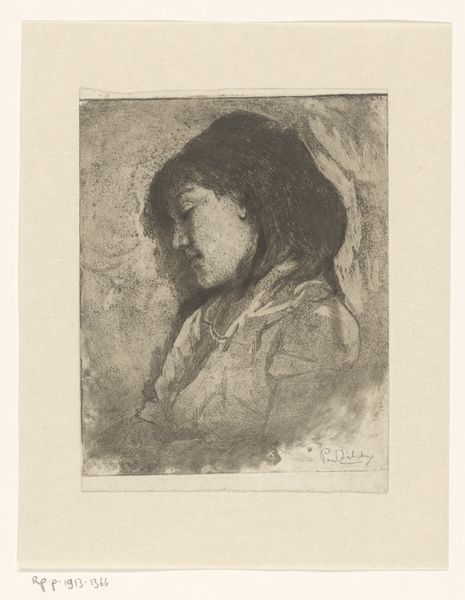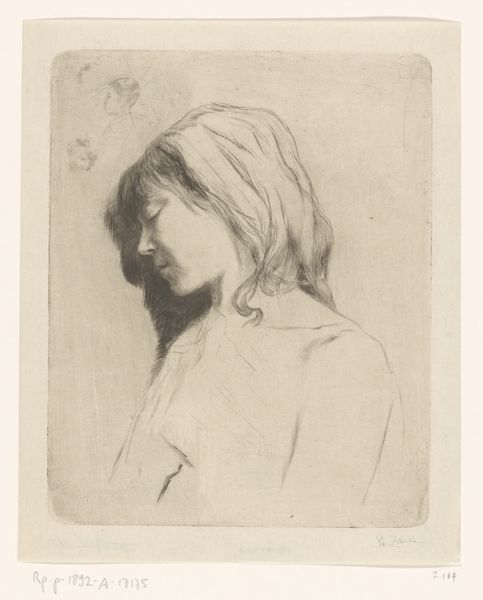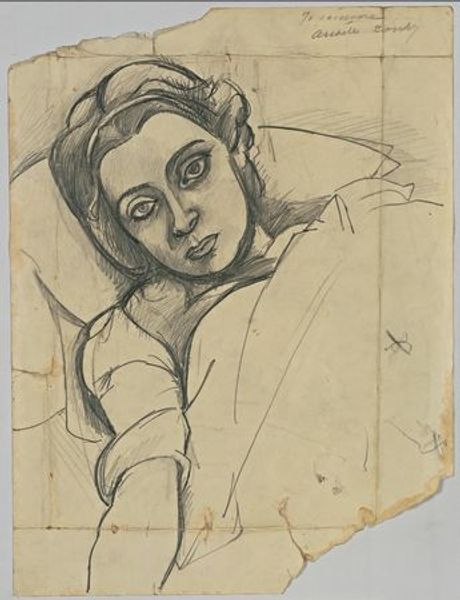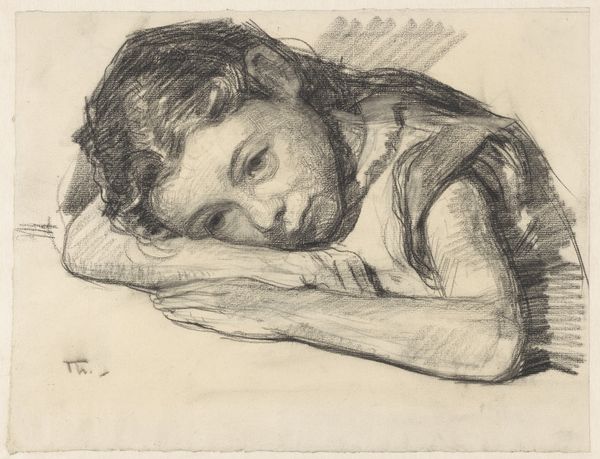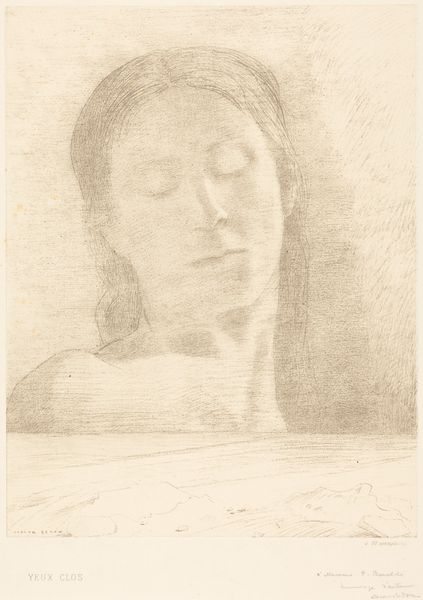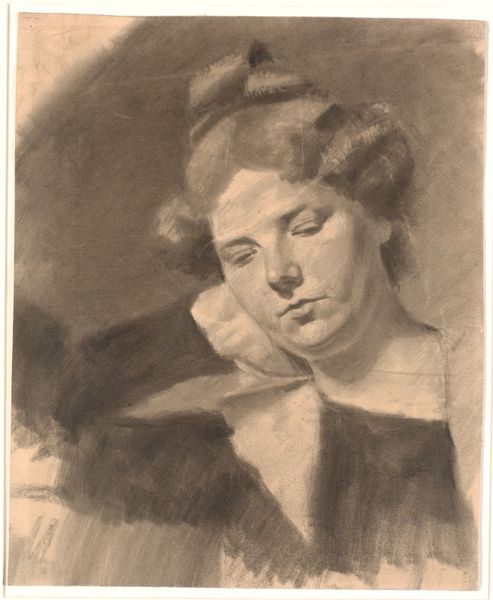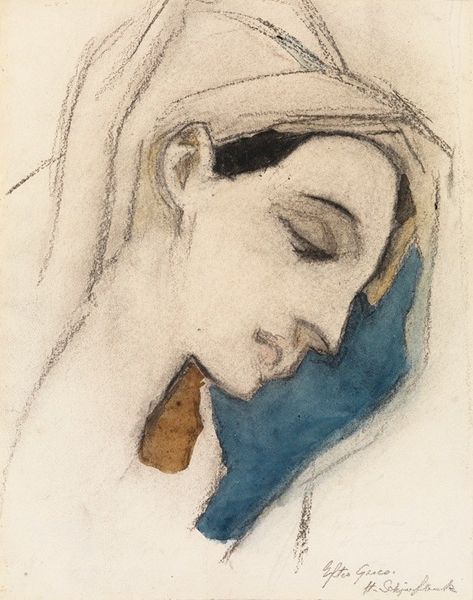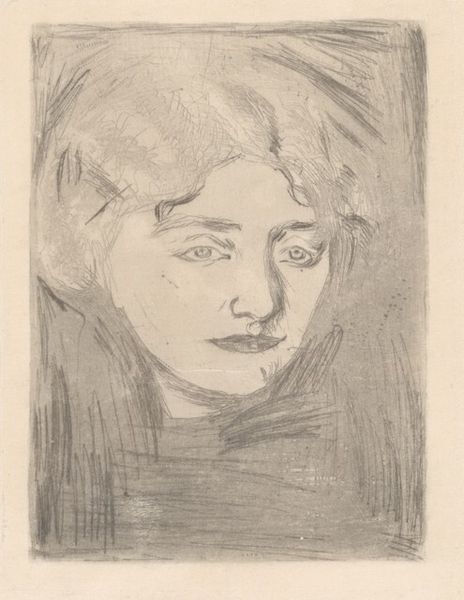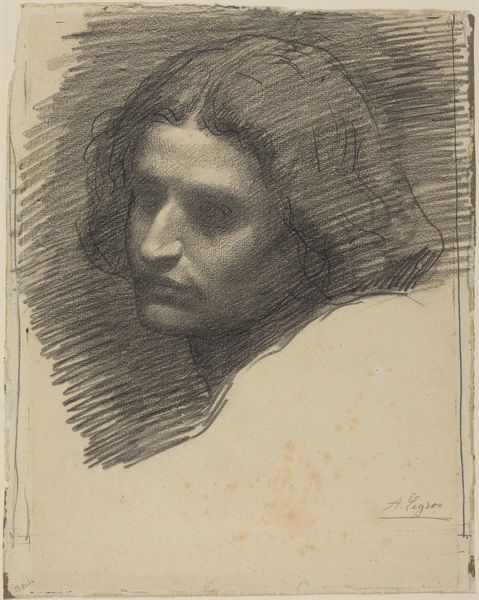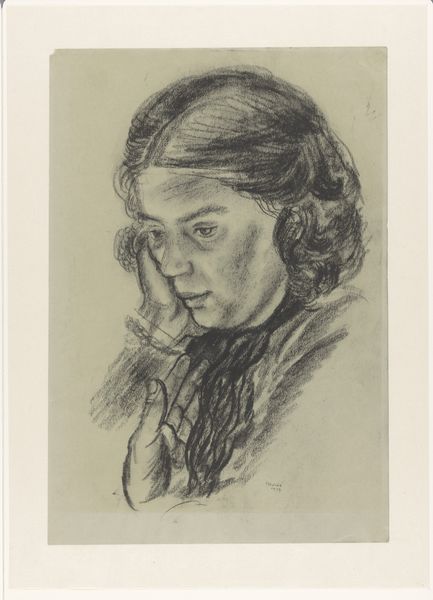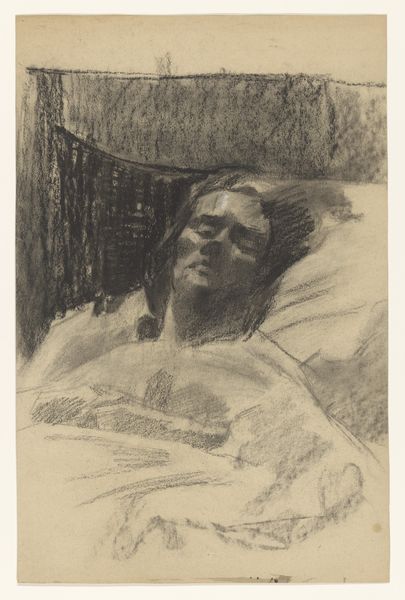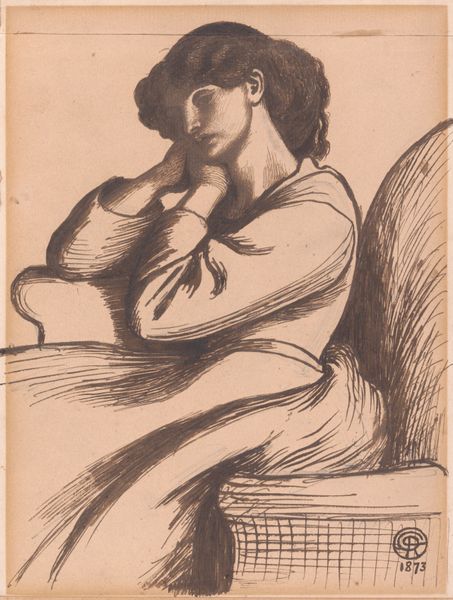
Copyright: Public Domain
Curator: Hermann Lismann's "Frauenkopf mit geschlossenen Augen," or "Head of a Woman with Closed Eyes," created in 1940, is rendered in charcoal on paper. The work resides here at the Städel Museum. Editor: It strikes me as immediately melancholic. The soft shading and closed eyes give the subject a sense of inward reflection, perhaps even resignation. The sepia tones reinforce that feeling of something past or fading. Curator: Given Lismann’s location in Germany during this period, we can view the work through a socio-political lens. Consider the labor involved in procuring these materials, even simple charcoal and paper. His access was undeniably impacted by wartime constraints. Was this portrait an act of resistance, a subtle act of preservation depicting humanity amidst increasing inhumanity? Editor: Or perhaps it is a formal study of shape and light, skillfully employing chiaroscuro to model the face and hair. The economy of the lines is particularly striking. The eyes, though closed, still suggest a weight of emotion—even a hint of defiance in the set of the jaw. Curator: I wonder about the availability and cost of art supplies during this time. How did the scarcity influence artistic choices and the subject matter that Lismann could portray? His position within German Expressionism is of interest; did the tenets of Expressionism make artwork like this possible as acceptable social commentary, or shield the artist? Editor: Interesting thought. Yet it seems possible to me that the artist simply seeks to explore an introspective state—rendering this timeless image, devoid of readily discernible cultural or historical signals. The intimacy and vulnerable quiet emanate independently, achieved through masterful deployment of light and shadow. It exists, palpably, by means of charcoal particles manipulated on paper. Curator: Your analysis draws attention to the artist's choices, the deliberate crafting of the image, but mine wants to ask, to whose consumption and to what end did this image serve? Editor: Perhaps the consumption was of the most private nature, for Lismann’s own exploration and meditation through rendering, for us to gaze and question through our own subjective lens. It underscores how visual art becomes an exchange that transcends the maker. Curator: Agreed. The material constraints, when contextualized in their production timeframe, really do influence one’s understanding, but it may equally express simple universal suffering. Editor: Absolutely. A study in form yields feeling; material reality enhances narrative, but a poignant, shared sensibility endures.
Comments
No comments
Be the first to comment and join the conversation on the ultimate creative platform.
